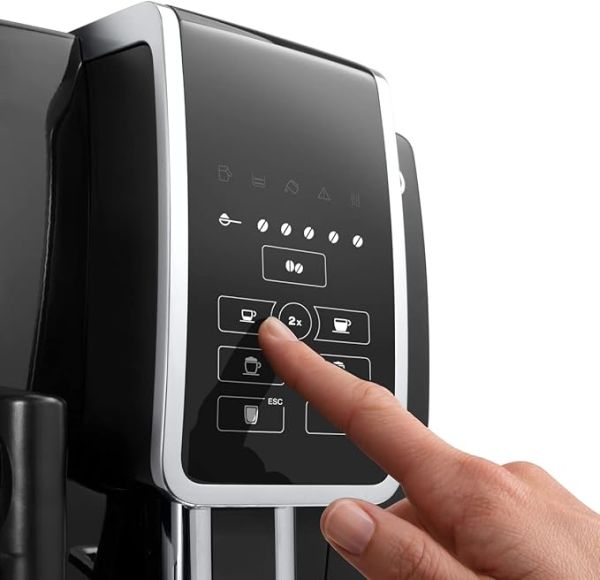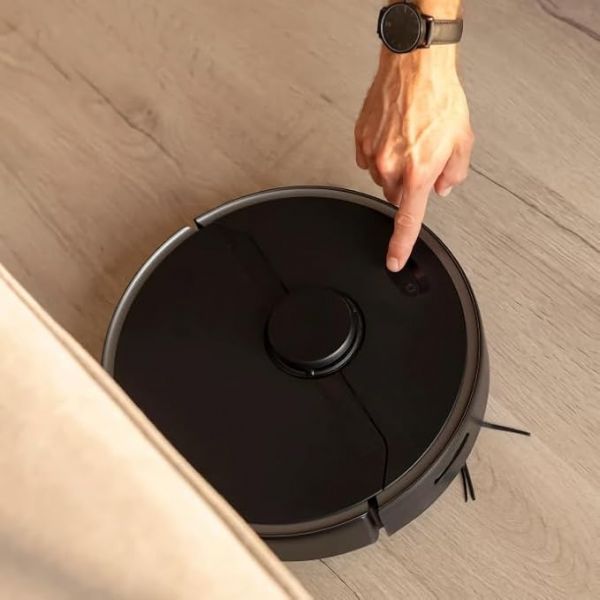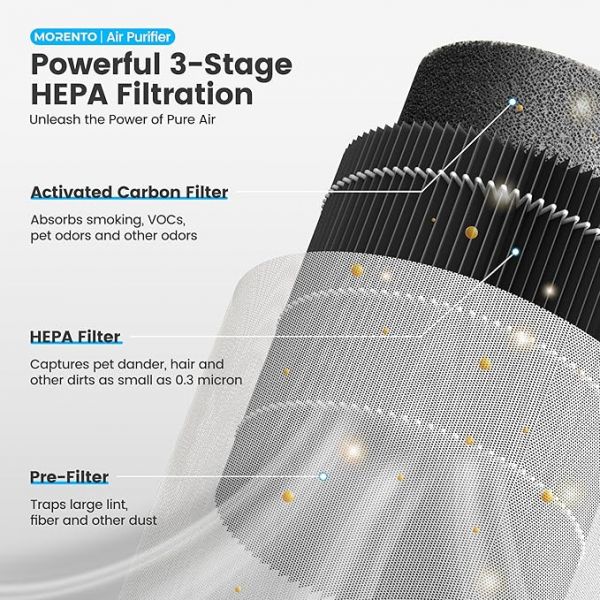Comparing Slow Cookers and Instant Pots to Choose the Best Kitchen Appliance

-
- Cooking Time Comparison: Which Saves More?
- Ease of Use: Navigating Settings and Programs
- Recipe Versatility: What Can You Make With Each?
- Energy Consumption: Which Appliance is More Economical?
- Maintenance and Cleaning: User-Friendly Perspectives
- Cleaning the Inner Pot
- Sealing Rings and Lids
- External Surfaces
- Regular Maintenance Tips
- Cost Analysis: Initial Investment vs. Long-Term Savings
- Q&A:
- What are the main differences between a slow cooker and an Instant Pot?
- What are the advantages of using a slow cooker?
- Are there any downsides to using an Instant Pot?
- Which option is better for making soups: a slow cooker or an Instant Pot?
- Reviews

For tender, rich flavors with minimal effort, opt for the versatile slow-braising appliance. Cooking meals over several hours allows flavors to meld beautifully, making it perfect for stews and roasts. Ideal for busy days, simply set it in the morning and return home to a warm, hearty dinner.
If you prioritize speed without compromising quality, the rapid meal maker is your go-to. Capable of preparing a variety of dishes in under an hour, it's perfect for those nights when time is limited. Just press a button, and enjoy perfectly cooked meals in no time.
Assess your lifestyle and cooking habits before committing. If you relish the art of flavor development and meal planning, select the former. However, if convenience and quick turnaround are your top priorities, the latter is the way to go.
Whichever option you choose, both offer unique benefits tailored to different culinary preferences.
Cooking Time Comparison: Which Saves More?
Both appliances offer unique advantages in terms of preparation time. The traditional method with a slow device usually requires a longer cooking duration, typically ranging from 4 to 8 hours, depending on the recipe. This extended period can be beneficial for flavors to fully develop.
In contrast, an electric pressure appliance cuts down the cooking time significantly. Most meals can be prepared in 30 minutes or less, making it ideal for those on a tight schedule. For example, stews or beans that usually take a couple of hours can often be completed in under an hour.
If time efficiency is your primary concern, the pressure device is the better choice. However, if you're looking for deeper flavors and tender results, the longer cooking option might be preferable. In essence, selecting between them depends on how quickly you wish to serve your meal versus the depth of taste you desire.
Ease of Use: Navigating Settings and Programs

Choose appliances with clear interfaces for hassle-free operation. Look for models displaying intuitive buttons or touchscreen controls that simplify your cooking tasks.
For beginner users, consider devices that offer pre-programmed functions. These options often include settings like sauté, steam, or slow simmer, making meal preparation straightforward without guesswork.
- Programmed Cooking: Models with preset programs allow one-touch cooking. This feature is ideal for busy individuals seeking convenience.
- Custom Settings: Some devices permit customization for temperature and time adjustments, catering to diverse recipes. Familiarize yourself with these features for versatile cooking.
- Quick Start Guides: Opt for brands providing easy-to-follow manuals or videos. These resources can accelerate your comfort level with the appliance.
Regularly practice using different settings to build confidence. Start with simple recipes that utilize various functions, gradually exploring more complex options.
- Experiment with multiple textures and flavors by trying different cooking techniques.
- Keep a notebook to record successful recipes and preferred settings.
Lastly, engage with online communities or forums dedicated to home cooking. Users often share tips and shortcuts that enhance the overall experience with their equipment.
Recipe Versatility: What Can You Make With Each?
Multifunctional appliances excel in various culinary applications. For those using a traditional slow preparation device, soups, stews, and braised meats shine. Recipes like classic beef bourguignon or vegetable chili benefit from extended cooking, developing rich flavors over time.
In contrast, a rapid preparation machine facilitates quick meals, making it suitable for grains, beans, and steam-fried dishes. Try whipping up quinoa salad or chicken curry in a fraction of the time. Many users also enjoy the ability to sauté ingredients directly in the pot before sealing it for pressure cooking.
Both devices offer an opportunity to experiment with desserts. Cakes can be prepared in a traditional unit by layering ingredients for a moist finish, such as a rich chocolate lava cake. Alternatively, create a delectable rice pudding in a high-pressure vessel, with minimal cooking time.
For breakfast, a slow appliance excels at preparing oatmeal or frittatas, allowing flavors to meld throughout the morning. On the flip side, for those busy weekdays, whip up scrambled eggs or pancakes quickly using the rapid method.
Experimentation is key; both tools unlock a plethora of culinary potential, catering to varying time constraints and preferences.
Energy Consumption: Which Appliance is More Economical?
The appliance requiring less energy is generally the pressure cooker. It cooks food fairly quickly, utilizing high pressure to achieve desired temperatures without prolonged heat consumption. Typical power usage can range from 700 to 1200 watts, and the cooking duration is significantly short, often under an hour for most meals.
In contrast, the slow cooking device typically operates at lower wattages, around 200 to 400 watts. However, it consumes power over extended periods, usually ranging from 4 to 10 hours, depending on the recipe. Although the wattage is lower, the total energy usage accumulates due to the lengthy cooking times, potentially leading to higher electricity bills.
For energy-conscious consumers, using the pressure cooker may yield savings. Performing a cost-analysis through local electricity rates can further specify savings potential. For instance, if the pressure cooker operates for 30 minutes at 1000 watts, the energy consumed would be approximately 0.5 kWh, while a slow cooking device running for 6 hours at 300 watts would consume roughly 1.8 kWh.
In summary, for high-efficiency meal preparation, the pressure cooker may offer better energy conservation. Consider switching between devices based on meal types to optimize energy use while enjoying a variety of culinary creations.
Maintenance and Cleaning: User-Friendly Perspectives
For both appliances, routine upkeep is simple and does not require specialized tools. For ease, consider the following guidelines.
Cleaning the Inner Pot
Choose inner pots that are dishwasher-safe for hassle-free cleaning. Non-stick surfaces can simplify residue removal. After use, allow the pot to cool before washing.
Sealing Rings and Lids
Detachable sealing rings can absorb odors and stains; it's advisable to soak them in vinegar water for comprehensive cleansing at regular intervals. Gasket maintenance helps maintain a proper seal, enhancing performance.
External Surfaces
Wipe down the outer casing with a damp cloth. Avoid abrasive materials that can scratch surfaces. A gentle kitchen cleaner can ensure a pristine finish without heavy scrubbing.
Regular Maintenance Tips
| Item | Action | Frequency |
|---|---|---|
| Inner Pot | Wash by hand or dishwasher | After each use |
| Sealing Ring | Inspect and clean | Weekly |
| Lid | Wipe and inspect | Monthly |
| Outer Shell | Wipe down | As needed |
Ensuring proper maintenance increases longevity and efficiency. Minding these details supports a smoother cooking process, resulting in pleasant user experience.
Cost Analysis: Initial Investment vs. Long-Term Savings

Choosing between these appliances requires analyzing the initial purchase versus potential savings over time. The upfront cost for a high-quality electric food preparation device typically ranges from $100 to $300, while multi-functional units can be higher. Consider how frequently you will use the device; daily usage can justify a higher initial cost.
When assessing long-term benefits, note that cooking at home generally reduces food expenses. On average, home-cooked meals can cost up to 50% less than takeout. Estimating that each meal prepared saves approximately $10 compared to dining out, a family cooking 5 meals weekly can save around $2,600 annually.
Factors affecting costs include energy consumption, which is generally lower for these appliances compared to conventional cooking methods. Many versions utilize less energy, contributing to lower electricity bills. On average, cooking for several hours consumes about 0.5 kWh, amounting to roughly $0.06 per meal depending on local energy rates.
Considering maintenance costs is also essential. These devices are often designed for durability, with limited need for replacements or repairs. Investing in quality can lead to savings as cheaper alternatives may require more frequent replacement or repairs. Selecting a well-reviewed model will enhance longevity and performance stability.
Overall, the higher initial investment can yield significant savings in food expenses and energy consumption over time, especially for regular users. A detailed comparison of your cooking habits versus dining expenses will help determine the best choice for your financial situation.
Q&A:
What are the main differences between a slow cooker and an Instant Pot?
The primary distinction lies in their cooking methods. Slow cookers operate by using low, steady heat over a longer period, perfect for tenderizing meats and developing flavors gradually. On the other hand, Instant Pots combine multiple cooking functions, including pressure cooking and slow cooking. This allows for significantly faster meal preparation. While a slow cooker might take 6-8 hours for a stew, an Instant Pot can do it in about 30 minutes.
What are the advantages of using a slow cooker?
Slow cookers are user-friendly and ideal for set-and-forget meals. You can prepare your ingredients, set the timer, and return after several hours to a fully cooked dish. They are particularly great for recipes that benefit from long cooking times, such as soups, stews, and casseroles. Additionally, they often have a lower energy consumption compared to an Instant Pot, making them economical for long cooking periods.
Are there any downsides to using an Instant Pot?
While Instant Pots are versatile and quick, they can have a learning curve, especially for those new to pressure cooking. Some users may find it challenging to understand the various settings and functions. Additionally, if not used correctly, there's a risk of overcooking or undercooking food. The pressure cooking process can also alter the texture of certain foods, which might not appeal to everyone. Lastly, cleaning the multiple parts can be more cumbersome compared to the straightforward design of a slow cooker.
Which option is better for making soups: a slow cooker or an Instant Pot?
Both appliances can effectively prepare soups, but they offer different benefits. A slow cooker allows flavors to meld over time, creating a rich, hearty soup that develops depth. However, for those short on time, an Instant Pot can quickly achieve a similar result by using pressure cooking. The Instant Pot’s sauté function also lets you brown ingredients first, enhancing the flavor profile. Ultimately, the choice depends on how much time you have and your cooking preferences.
Reviews
Matthew Wilson
I recently picked up both a slow cooker and an Instant Pot, curious about how they stack up against each other. The slow cooker is great for those all-day meals, like stews that develop rich flavors over time. You can set it and forget it, which is a big plus for busy days. However, it does take a while to cook anything, so plan ahead! On the flip side, the Instant Pot offers incredible versatility. It can pressure cook, sauté, steam, and even make yogurt. I find it especially useful for quick meals during the week. It speeds up cooking times significantly, which I appreciate after a long day. But I’ll admit, the learning curve can be a bit steep with all the buttons and settings. Both have their strengths and downsides. If you enjoy meal prep and don’t mind longer cooking times, the slow cooker is your friend. But if you want speed and flexibility, the Instant Pot is hard to beat. For me, having both is a win since they complement each other well in the kitchen.
Michael Brown
I recently tried both slow cookers and Instant Pots, and each has its strengths and weaknesses. The slow cooker is fantastic for meal prep; I love tossing ingredients in and letting it work its magic over several hours. The flavors tend to meld beautifully, giving you that home-cooked taste. However, it does require planning ahead, as you need to start cooking early in the day. On the other hand, the Instant Pot is a powerhouse for quick meals. I can go from frozen to fully cooked in under an hour, which is a lifesaver on busy weekdays. Plus, the sauté function is a plus for browning meats and veggies before cooking. The downside, though, is that it can sometimes lead to less depth of flavor compared to slow cooking, since things cook faster. Ultimately, I think both appliances have their place in my kitchen. If you enjoy leisurely cooking and rich flavors, a slow cooker is great. If you need speed and versatility, the Instant Pot is the way to go. Happy cooking!
BlazeHunter
I recently bought "Slow Cookers vs. Instant Pots: Pros and Cons," and it was a helpful guide in making my decision. As someone who enjoys cooking but has a busy schedule, I wanted to understand the benefits and drawbacks of both appliances. The book does a great job breaking down each option. I appreciated the detailed comparison of cooking times, versatility, and ease of use. Slow cookers seem perfect for set-it-and-forget-it meals, while Instant Pots are fantastic for quick meals without sacrificing flavor. The pros and cons were laid out clearly, making it easy to weigh what would work best for my lifestyle. I liked the personal anecdotes and practical tips sprinkled throughout the chapters. If you’re struggling to decide between the two, this book is a solid resource. It will help you identify which cooking method aligns with your needs. I feel more confident in my choice thanks to this guide. Definitely recommended for anyone contemplating these kitchen appliances!
Olivia Smith
I recently bought the book "Slow Cookers vs. Instant Pots: Pros and Cons" and found it incredibly helpful for deciding which kitchen appliance to invest in. The author does a fantastic job of breaking down the benefits and drawbacks of each option with clear examples. I appreciate the detailed comparison of cooking times and flavors. Slow cookers are great for those who love set-and-forget meals but can take a while to prepare. Instant Pots, on the other hand, are perfect for busy days when I want a quick meal without sacrificing taste. The pros and cons chart at the end made it easy to weigh my options based on my cooking habits. I also liked the real-life testimonials from other users that provided insight into their experiences. Whether you're an experienced cook or just starting out, this book is a valuable guide. It helped me make a confident choice and discover which appliance fits my lifestyle better. I highly recommend it to anyone contemplating these two popular cooking methods!
Oliver
As a regular guy who loves cooking, I recently tried out both a slow cooker and an Instant Pot, and I wanted to share my thoughts. The slow cooker is perfect for those long, lazy days. You can throw in your ingredients in the morning, set it, and forget it until dinner. The flavors really meld together, resulting in delicious meals. However, the downside is the time it takes—some recipes can take 8 hours or more. On the flip side, the Instant Pot is a lifesaver when you’re short on time. I can whip up a meal in a fraction of the time thanks to its pressure cooking feature. It’s multifunctional too, working as a steamer, sauté pan, and more. That said, it can be a bit intimidating with all its buttons and settings at first. Also, I noticed the texture of some dishes can differ compared to slow cooking; they might not be quite as tender. Both appliances have their advantages and disadvantages. Depending on your cooking style and schedule, one might suit you better than the other.








